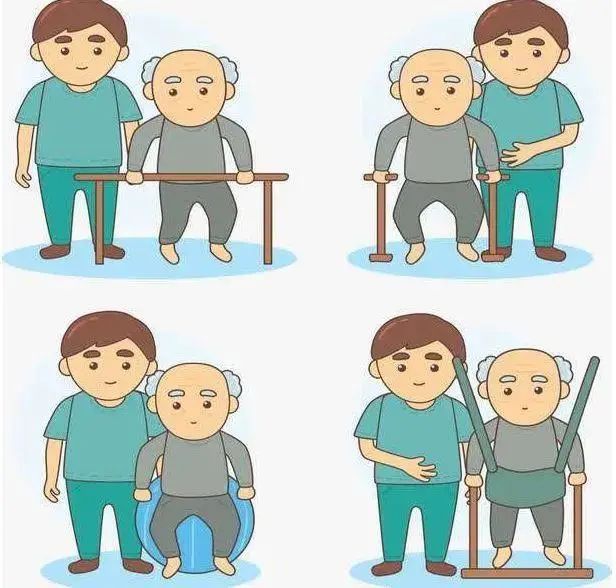 Researchers from Sweden were interested in learning about the importance of physical activity in the first 6 months following a person having a stroke.
Researchers from Sweden were interested in learning about the importance of physical activity in the first 6 months following a person having a stroke.- Strokes, the fifth leading cause of deathTrusted Source in the United States, occur when a blood clot bursts or a vein ruptures in the brain.
- The new study’s authors learned that increasing activity levels improved the chances of study participants having a better functional outcome following a stroke.
Strokes impact hundreds of thousands of people every year, and they can range from causing mild damage to death.
In non-lethal strokes, some issues people face may include loss of functioning in one side of the body, difficulty speaking, and motor skill deficits.
Functional outcome following a stroke is the basis for a new study published in JAMA Network OpenTrusted Source. The authors were primarily interested in the six-month timeframe following a stroke event and what role physical activity plays in improving outcomes.
The study authors used data from the EFFECTS studyTrusted Source, which stands for “Efficacy of Fluoxetine — a Randomised Controlled Trial in Stroke.” The study obtained data from people who had strokes between October 2014 to June 2019.
The authors were interested in participants who signed up for the study 2-15 days after having a stroke and who also followed up over a period of six months.
Participants had to have their physical activity assessed at one week, one month, three months, and six months for study inclusion.
Overall, 1,367 participants qualified for the study, with 844 male participants and 523 female participants. The participants’ ages ranged from 65 to 79 years, with a median age of 72 years.
During the follow-ups, doctors assessed the participants’ physical activity levels. Using the Saltin-Grimby Physical Activity Level Scale, their activity was marked at one of four levels:
- inactivity
- light-intensity physical activity for at least 4 hours per week
- moderate-intensity physical activity for at least 3 hours per week
- vigorous-intensity physical activity, such as the type seen in training for competitive sports for at least 4 hours per week.
The researchers then placed the participants into one of two categories: increaser or decreaser.
The increaser group included people who sustained light-intensity physical activity after achieving a maximum rate of increase between one week and one month post-stroke and kept a light-intensity physical activity to the six-month point.
On the other hand, the decreaser group included people who showed a decline in physical activity and eventually became inactive within six months.
The study analysis showed that of the two groups, the increaser group had better odds for functional recovery.
When looking at the follow-ups, the increaser group sustained light-intensity physical activity after achieving a maximum rate of increase between 1 week and 1 month.
The decreaser group had a small drop in any physical activity at their one-week and one-month follow-up appointments.
With the decreaser group, the entire group became inactive by the six-month follow-up appointment.
The participants in the increaser group were younger, predominantly male, were able to walk unassisted, had a healthy cognitive function, and did not need to use antihypertensive or anticoagulant medications compared to the decreaser participants.
The authors noted that while stroke severity is a factor, some participants who had severe strokes were in the increaser group.
“While it may be expected for patients with severe stroke to have poorer functional recovery despite their physical activity level, being physically active is still associated with a better outcome, regardless of stroke severity, supporting the health benefits of poststroke physical activity,” the study authors wrote.
Overall, the study emphasizes the importance of encouraging physical activity early on after having a stroke and targeting people who show a decline in physical activity in the first month post-stroke.
Board certified cardiologist Dr. Robert Pilchik, based in New York City, who was not involved in the study, weighed in on the study for Medical News Today.
“This study confirms what many of us have always suspected,” said Dr. Pilchik. “Physical activity immediately after stroke plays a critical role in restoring functional capacity and in re-establishing normal lifestyles.”
“This is most important during the subacute period following the event (up to 6 months),” Dr. Pilchik continued. “Interventions taken during this time to enhance participation among stroke survivors results in improved outcomes at 6 months.”
The major implication of this study is that patients do better when their physical activity increases over time in the first 6 months following a stroke.
Dr. Adi Iyer, a neurosurgeon and interventional neuroradiologist at the Pacific Neuroscience Institute at Providence Saint John’s Health Center in Santa Monica, CA, also spoke with MNT about the study. He said:
“Physical activity helps with retraining of the mind-muscle connections that may have been damaged following a stroke. Exercise helps ‘rewire’ the brain to help patients regain lost function.”
Ryan Glatt, a senior brain health coach and director of the FitBrain Program at the Pacific Neuroscience Institute in Santa Monica, CA, also weighed in.
“Physical activity after an acquired brain injury (such as a stroke) seems to be important earlier in the process,” said Glatt. “Future studies that implement different physical activity interventions, including interdisciplinary rehabilitation, would be interesting to see how outcomes are affected.”
Republished from Medical News today, By Erika Watts on May 9, 2023 — Fact checked by Alexandra Sanfins, Ph.D.
Post time: May-09-2023

